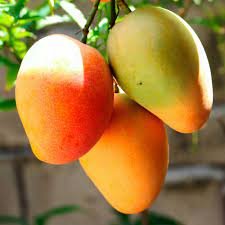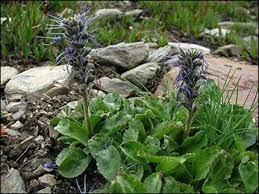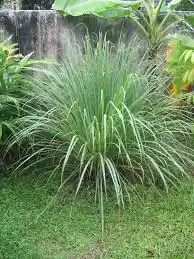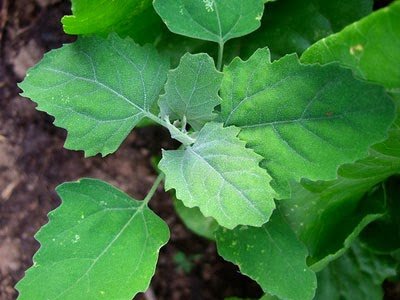Jackfruit Nutrition Requirements
Nutrition required by Jackfruit at each stage of its life cycle.
SOIL PREPARATION
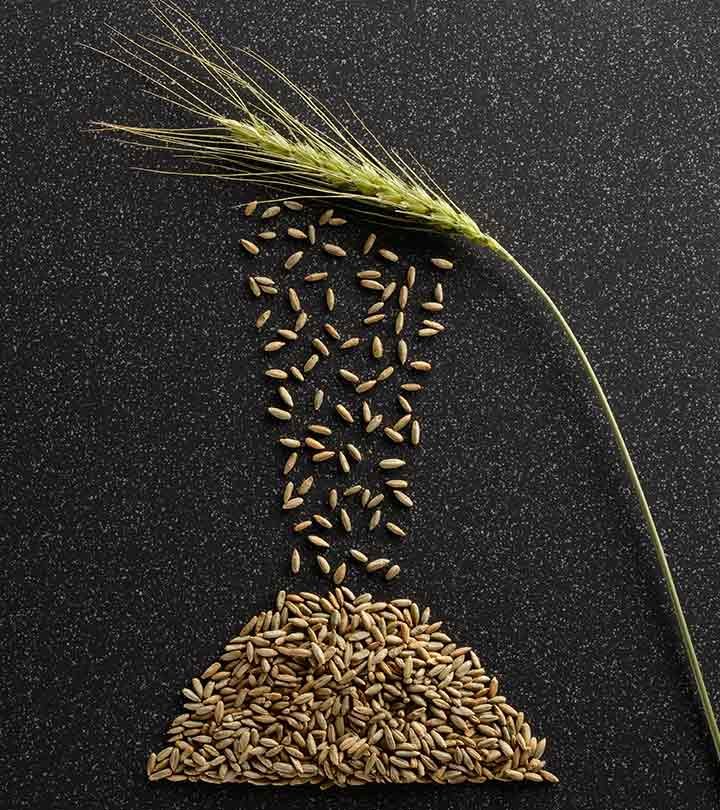
Soil Preparation
Soil preparation is a crucial step in jackfruit cultivation, as it lays the foundation for healthy growth and development of the trees.
Here's a guide to soil preparation method and nutrition requirements at the soil preparation stage for jackfruit:
**Soil Preparation Method:**
1. **Site Selection:** Choose a well-drained site with loamy or sandy loam soil for jackfruit cultivation. Avoid waterlogged or saline soils, as they can hinder root development.
2. **Land Preparation:** Prepare the land by plowing or digging to a depth of about 60-90 cm. Remove any weeds, rocks, or debris from the planting area.
3. **Soil Testing:** Conduct a soil test to determine the pH and nutrient levels of the soil. Jackfruit trees prefer slightly acidic to neutral soil with a pH range of 6.0 to 7.5.
4. **Soil Amendments:** Based on the soil test results, amend the soil as needed to improve fertility and pH levels. Incorporate organic matter such as well-rotted compost or farmyard manure into the soil to improve soil structure and nutrient content.
5. **Fertilizer Application:** Apply a balanced fertilizer with NPK (nitrogen, phosphorus, potassium) in the ratio of 1:1:1 or 2:1:1 during soil preparation. The specific fertilizer requirement may vary depending on soil nutrient levels and local recommendations.
6. **Mixing Fertilizers:** Mix the fertilizer thoroughly into the soil during land preparation to ensure even distribution of nutrients.
7. **Mulching:** Optionally, apply a layer of organic mulch such as dried leaves or grass clippings around the base of the jackfruit trees to conserve moisture, suppress weed growth, and add organic matter to the soil.
8. **Watering:** After soil preparation, irrigate the planting area thoroughly to moisten the soil and provide adequate moisture for planting.
**Nutrition Requirement:**
1. **Nitrogen (N):** Nitrogen is essential for vegetative growth and overall tree development in jackfruit. Apply nitrogen-rich fertilizers such as urea or ammonium sulfate to promote healthy leaf growth and canopy development.
2. **Phosphorus (P):** Phosphorus is important for root development and flowering in jackfruit trees. Apply phosphorus-rich fertilizers such as single superphosphate or rock phosphate during soil preparation to support root growth and flower initiation.
3. **Potassium (K):** Potassium plays a role in fruit development and overall tree vigor in jackfruit. Apply potassium-rich fertilizers such as potassium chloride or potassium sulfate to promote fruit development and enhance tree resilience to environmental stress.
4. **Micronutrients:** In addition to macronutrients (NPK), jackfruit trees require essential micronutrients such as zinc, iron, manganese, copper, boron, and molybdenum. Incorporate micronutrient-rich fertilizers or micronutrient mixtures into the soil during preparation to ensure balanced nutrition for the trees.
5. **pH Adjustment:** If the soil pH is outside the optimal range for jackfruit cultivation (6.0 to 7.5), consider applying lime to raise pH or elemental sulfur to lower pH as needed to create a suitable growing environment for jackfruit trees.
By following these soil preparation methods and meeting the nutrition requirements during the soil preparation stage for jackfruit cultivation, growers can establish healthy trees and promote optimal growth and fruit production. Regular soil testing and monitoring are essential for maintaining soil fertility and addressing any nutrient deficiencies over time.
Early Growth (Germination to Establishment)

Early Growth
During the early growth stage of jackfruit (from germination to establishment of young seedlings), the nutritional requirements of the plants are focused on supporting vigorous root and shoot development, enhancing overall growth, and establishing a strong foundation for future growth stages.
Here are the key nutritional requirements during the early growth stage of jackfruit:
1. **Nitrogen (N):** Nitrogen is crucial for promoting vegetative growth, including the development of leaves, stems, and roots. Adequate nitrogen availability encourages healthy shoot and root growth, contributing to the establishment of young jackfruit seedlings.
2. **Phosphorus (P):** Phosphorus plays a vital role in root development, energy transfer, and overall plant growth. Adequate phosphorus availability promotes robust root system development, improving nutrient uptake efficiency and enhancing seedling establishment.
3. **Potassium (K):** Potassium is essential for various physiological processes in plants, including water regulation, enzyme activation, and disease resistance. Adequate potassium availability supports balanced growth and development, contributing to the establishment of healthy jackfruit seedlings.
4. **Micronutrients:** Essential micronutrients such as zinc, iron, manganese, copper, boron, and molybdenum are required in smaller quantities but are equally important for optimal plant growth and development during the early growth stage. These micronutrients play essential roles in enzyme activation, photosynthesis, and overall plant metabolism.
**Nutrient Management Practices:**
1. **Soil Testing:** Conduct soil tests to assess nutrient levels and pH in the planting area. Soil test results guide nutrient management decisions and help determine the appropriate fertilizer application rates.
2. **Balanced Fertilization:** Apply a balanced fertilizer with a moderate to high nitrogen content to promote vigorous vegetative growth during the early growth stage. Choose a fertilizer formulation with a balanced NPK ratio suitable for young plants, or use a nitrogen-rich fertilizer supplemented with phosphorus and potassium.
3. **Fertilizer Application:** Apply fertilizers evenly around the base of young jackfruit seedlings, avoiding direct contact with plant roots to prevent fertilizer burn. Incorporate fertilizers into the soil surface and water thoroughly after application to facilitate nutrient uptake.
4. **Organic Matter:** Incorporate organic matter such as compost or well-rotted manure into the soil during planting or as a top dressing to improve soil fertility and provide additional nutrients to young jackfruit seedlings.
5. **Mulching:** Apply organic mulch around the base of young jackfruit seedlings to conserve soil moisture, suppress weed growth, and gradually release nutrients as the mulch decomposes.
6. **Water Management:** Ensure adequate soil moisture levels during the early growth stage to support active root and shoot growth. Irrigate young jackfruit seedlings as needed, keeping the soil consistently moist but not waterlogged.
By meeting the nutritional requirements and implementing appropriate nutrient management practices during the early growth stage, growers can promote healthy root and shoot development, enhance seedling establishment, and lay the foundation for successful jackfruit cultivation. Regular monitoring of plant growth and nutrient status helps ensure optimal nutrient uptake and overall plant health during this critical growth stage.
Tillering Stage (Shoot Development)

Tillering Stage
During the tillering stage of jackfruit growth, which involves shoot development and the emergence of new stems from the main trunk, the nutritional requirements of the plants focus on supporting vigorous vegetative growth, enhancing shoot development, and establishing a strong framework for future growth and fruit production.
Here are the key nutritional requirements during the tillering stage of jackfruit:
1. **Nitrogen (N):** Nitrogen is essential for promoting robust vegetative growth and stimulating shoot development during the tillering stage. Adequate nitrogen availability encourages the production of healthy leaves, stems, and branches, contributing to the development of a strong canopy structure.
2. **Phosphorus (P):** Phosphorus plays a vital role in root development, energy transfer, and overall plant growth. Adequate phosphorus availability supports vigorous shoot growth, enhancing branching and tillering in jackfruit plants.
3. **Potassium (K):** Potassium is crucial for various physiological processes in plants, including water regulation, enzyme activation, and disease resistance. Adequate potassium availability promotes strong cell walls, improves water and nutrient uptake, and enhances overall plant vigor during the tillering stage.
4. **Micronutrients:** Essential micronutrients such as zinc, iron, manganese, copper, boron, and molybdenum are required in smaller quantities but are equally important for optimal plant growth and development during the tillering stage. These micronutrients play essential roles in enzyme activation, photosynthesis, and overall plant metabolism, supporting healthy shoot development and tillering.
**Nutrient Management Practices:**
1. **Soil Testing:** Conduct soil tests to assess nutrient levels and pH in the planting area. Soil test results guide nutrient management decisions and help determine the appropriate fertilizer application rates.
2. **Balanced Fertilization:** Apply a balanced fertilizer with a moderate to high nitrogen content to promote vigorous vegetative growth and shoot development during the tillering stage. Choose a fertilizer formulation with a balanced NPK ratio suitable for mature plants, or use a nitrogen-rich fertilizer supplemented with phosphorus and potassium.
3. **Fertilizer Application:** Apply fertilizers evenly around the base of jackfruit trees, avoiding direct contact with plant roots to prevent fertilizer burn. Incorporate fertilizers into the soil surface and water thoroughly after application to facilitate nutrient uptake.
4. **Organic Matter:** Incorporate organic matter such as compost or well-rotted manure into the soil during planting or as a top dressing to improve soil fertility and provide additional nutrients to jackfruit trees during the tillering stage.
5. **Mulching:** Apply organic mulch around the base of jackfruit trees to conserve soil moisture, suppress weed growth, and gradually release nutrients as the mulch decomposes. Mulching also helps maintain a more stable soil temperature and promotes beneficial soil microorganisms.
6. **Water Management:** Ensure adequate soil moisture levels during the tillering stage to support active shoot development and tillering. Irrigate jackfruit trees as needed, keeping the soil consistently moist but not waterlogged.
By meeting the nutritional requirements and implementing appropriate nutrient management practices during the tillering stage, growers can promote vigorous shoot development, enhance branching and tillering, and establish a strong framework for future growth and fruit production in jackfruit trees. Regular monitoring of plant growth and nutrient status helps ensure optimal nutrient uptake and overall plant health during this critical growth stage.
Flowering

Flowering
During the flowering stage of jackfruit, the nutritional requirements of the plants shift to support flower development, pollination, and fruit set. Proper nutrition during this stage is crucial for maximizing flower production and ensuring successful fruit development.
Here are the key nutritional requirements during the flowering stage of jackfruit:
1. **Phosphorus (P):** Phosphorus plays a vital role in flower development, pollen formation, and fruit set in jackfruit trees. Adequate phosphorus availability is essential during the flowering stage to support robust flower production and enhance pollination.
2. **Potassium (K):** Potassium is crucial for various physiological processes in plants, including flower and fruit development. Adequate potassium availability promotes flower initiation, enhances fruit set, and improves overall fruit quality in jackfruit trees during the flowering stage.
3. **Calcium (Ca):** Calcium is essential for cell wall formation and structural integrity in plants. Adequate calcium availability is important during the flowering stage to support strong flower structure, prevent blossom-end rot in developing fruits, and ensure overall fruit quality in jackfruit trees.
4. **Boron (B):** Boron is a micronutrient that plays a critical role in flower development, pollen germination, and fruit set in plants. Adequate boron availability is essential during the flowering stage to promote healthy flower formation, improve pollination efficiency, and enhance fruit set in jackfruit trees.
**Nutrient Management Practices:**
1. **Soil Testing:** Conduct soil tests to assess nutrient levels and pH in the planting area. Soil test results guide nutrient management decisions and help determine the appropriate fertilizer application rates.
2. **Balanced Fertilization:** Apply a balanced fertilizer with a focus on phosphorus, potassium, calcium, and boron to promote flower development, enhance pollination, and support fruit set during the flowering stage of jackfruit. Choose a fertilizer formulation with a balanced NPK ratio supplemented with micronutrients suitable for flowering and fruiting plants.
3. **Fertilizer Application:** Apply fertilizers evenly around the base of jackfruit trees, avoiding direct contact with flowers or developing fruits to prevent fertilizer burn. Incorporate fertilizers into the soil surface and water thoroughly after application to facilitate nutrient uptake.
4. **Foliar Feeding:** Consider foliar application of micronutrient sprays containing boron and calcium during the flowering stage to supplement soil-applied fertilizers and ensure adequate nutrient availability for flower development and fruit set in jackfruit trees.
5. **Organic Matter:** Incorporate organic matter such as compost or well-rotted manure into the soil during planting or as a top dressing to improve soil fertility and provide additional nutrients to jackfruit trees during the flowering stage.
6. **Water Management:** Ensure adequate soil moisture levels during the flowering stage to support active flower development, pollination, and fruit set. Irrigate jackfruit trees as needed, keeping the soil consistently moist but not waterlogged.
By meeting the nutritional requirements and implementing appropriate nutrient management practices during the flowering stage, growers can promote robust flower production, enhance pollination efficiency, and support successful fruit set in jackfruit trees. Regular monitoring of plant growth and nutrient status helps ensure optimal nutrient uptake and overall plant health during this critical growth stage.
Matchuration & Ripening

Matchuration & Ripening
During the maturation and ripening stage of jackfruit, the nutritional requirements of the plants shift to support fruit development, maturation, and quality. Proper nutrition during this stage is crucial for maximizing fruit size, flavor, and nutritional content.
Here are the key nutritional requirements during the maturation and ripening stage of jackfruit:
1. **Potassium (K):** Potassium is crucial for fruit development, sugar accumulation, and overall fruit quality in jackfruit. Adequate potassium availability during the maturation and ripening stage promotes fruit enlargement, enhances sweetness, and improves overall fruit quality.
2. **Calcium (Ca):** Calcium is essential for cell wall structure and integrity in fruits. Adequate calcium availability during the maturation and ripening stage helps prevent disorders such as blossom-end rot and improves fruit texture and shelf life in jackfruit.
3. **Magnesium (Mg):** Magnesium is important for chlorophyll synthesis, enzyme activation, and carbohydrate metabolism in plants. Adequate magnesium availability during the maturation and ripening stage supports photosynthesis, enhances fruit coloration, and improves overall fruit quality in jackfruit.
4. **Boron (B):** Boron is a micronutrient that plays a critical role in fruit development, sugar transport, and cell wall formation. Adequate boron availability during the maturation and ripening stage promotes fruit enlargement, enhances sweetness, and improves overall fruit quality in jackfruit.
**Nutrient Management Practices:**
1. **Soil Testing:** Conduct soil tests to assess nutrient levels and pH in the planting area. Soil test results guide nutrient management decisions and help determine the appropriate fertilizer application rates.
2. **Balanced Fertilization:** Apply a balanced fertilizer with a focus on potassium, calcium, magnesium, and boron to support fruit development, maturation, and ripening in jackfruit. Choose a fertilizer formulation with a balanced NPK ratio supplemented with micronutrients suitable for fruiting plants.
3. **Fertilizer Application:** Apply fertilizers evenly around the base of jackfruit trees, focusing on potassium, calcium, magnesium, and boron to support fruit development and maturation. Incorporate fertilizers into the soil surface and water thoroughly after application to facilitate nutrient uptake.
4. **Foliar Feeding:** Consider foliar application of micronutrient sprays containing calcium, magnesium, and boron during the maturation and ripening stage to supplement soil-applied fertilizers and ensure adequate nutrient availability for fruit development and quality in jackfruit.
5. **Organic Matter:** Incorporate organic matter such as compost or well-rotted manure into the soil during planting or as a top dressing to improve soil fertility and provide additional nutrients to jackfruit trees during the maturation and ripening stage.
6. **Water Management:** Ensure adequate soil moisture levels during the maturation and ripening stage to support fruit development and quality in jackfruit. Irrigate jackfruit trees as needed, keeping the soil consistently moist but not waterlogged.
By meeting the nutritional requirements and implementing appropriate nutrient management practices during the maturation and ripening stage, growers can maximize fruit size, flavor, and quality in jackfruit. Regular monitoring of plant growth and nutrient status helps ensure optimal nutrient uptake and overall fruit quality during this critical growth stage.
Harvesting

Harvesting
During the harvesting stage of jackfruit, proper nutrition management and specific procedures are important to ensure optimal fruit quality, yield, and post-harvest handling.
Here are the nutrition requirements and procedures to follow during the harvesting stage for jackfruit:
**Nutrition Requirements:**
1. **Potassium (K):** Potassium is important for fruit development, quality, and shelf life in jackfruit. Adequate potassium availability is necessary to support fruit enlargement, flavor development, and overall fruit quality during the harvesting stage. Potassium also helps improve fruit firmness and reduces post-harvest losses.
2. **Calcium (Ca):** Calcium is essential for maintaining fruit firmness, reducing fruit disorders, and enhancing post-harvest quality in jackfruit. Adequate calcium availability is necessary to prevent physiological disorders such as fruit softening, internal breakdown, and chilling injury during storage and transportation.
3. **Phosphorus (P) and Nitrogen (N):** While phosphorus and nitrogen are important for overall tree growth and development, their specific requirements during the harvesting stage may not be as critical as potassium and calcium. However, maintaining balanced soil fertility with adequate phosphorus and nitrogen levels is important for overall tree health and fruit production.
**Procedure at Harvesting Stage:**
1. **Timing of Harvest:** Harvest jackfruit when it reaches the desired maturity stage based on fruit size, color, aroma, and firmness. The fruit should be fully developed, mature, and have a strong aroma, but not overly ripe or soft. Harvesting too early or too late can affect fruit quality and shelf life.
2. **Tools and Equipment:** Use sharp, clean cutting tools such as knives or pruning shears to harvest jackfruit. Avoid using blunt or dull tools that can damage the fruit or tree.
3. **Harvesting Technique:** Cut the jackfruit stem carefully with a clean cut, leaving a short stem attached to the fruit. Avoid damaging the fruit or surrounding branches during the harvesting process.
4. **Handling and Transport:** Handle harvested jackfruit with care to avoid bruising or damage to the fruit. Place harvested fruits in clean containers or baskets lined with soft padding to prevent physical damage during transport.
5. **Post-Harvest Treatment:** After harvesting, wash the fruits gently with clean water to remove any dirt or debris. Allow the fruits to air dry naturally before packing or storing them.
6. **Storage and Transportation:** Store harvested jackfruit in a cool, well-ventilated area to prolong shelf life and maintain fruit quality. Avoid stacking or piling fruits to prevent bruising or damage during storage and transportation.
7. **Post-Harvest Management:** Monitor stored jackfruit regularly for signs of ripening, decay, or damage. Remove any damaged or spoiled fruits promptly to prevent the spread of decay to other fruits.
By following these nutrition requirements and procedures during the harvesting stage, growers can ensure optimal fruit quality, yield, and post-harvest handling in jackfruit orchards. Regular monitoring of fruit maturity and post-harvest management practices are important for maintaining fruit quality and maximizing market value.
Jackfruit Farming Economics
Get details of Profitability and cost estimate in growing Jackfruit per acres of Land.
SOIL PREPARATION
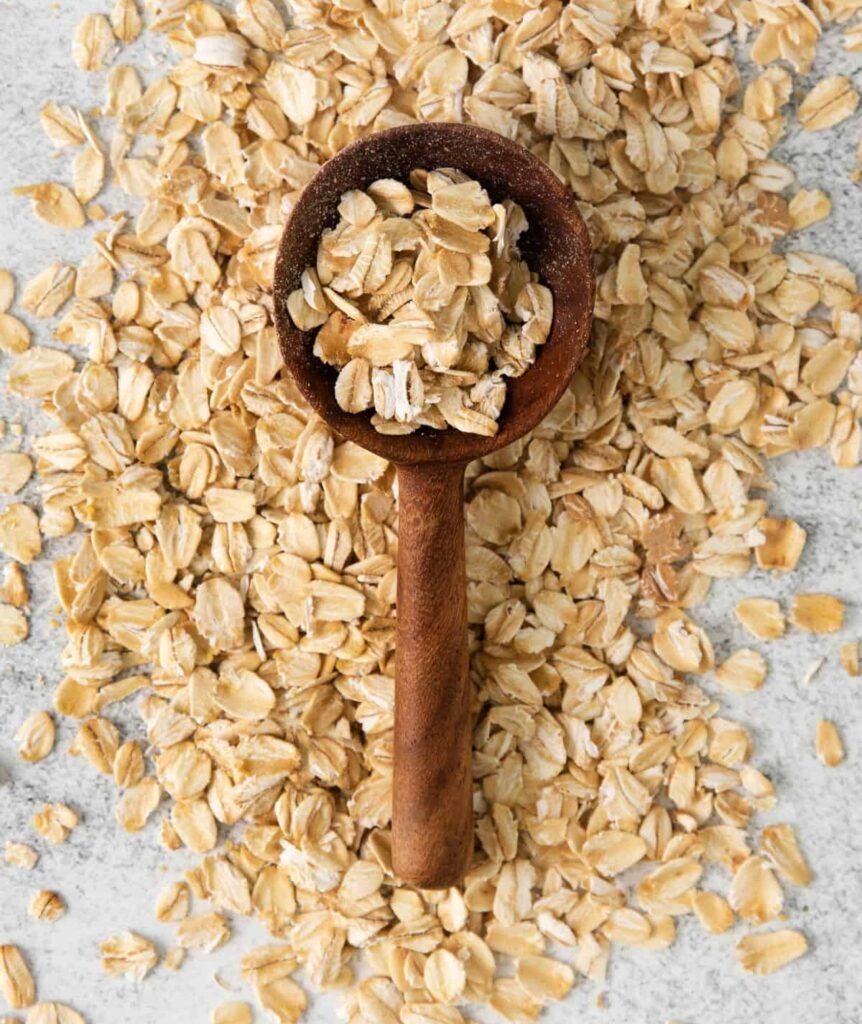
Soil Preparation
Early Growth (Germination to Establishment)

Early Growth
Tillering Stage (Shoot Development)

Tillering Stage
Flowering

Flowering
Matchuration & Ripening

Matchuration & Ripening
Harvesting

Harvesting
Jackfruit Disease Details
Nutrition required by Jackfruit at each stage of its life cycle.
SOIL PREPARATION

Soil Preparation
During the soil preparation stage for jackfruit cultivation, several diseases and pests can affect the crop.
Here are some common diseases and pests that may occur at this stage, along with precautions to prevent their occurrence:
**Diseases:**
1. **Root Rot:** Root rot is a fungal disease caused by pathogens such as Phytophthora spp. and Fusarium spp. These pathogens thrive in poorly drained soils and can infect jackfruit roots during the soil preparation stage, leading to root rot and subsequent plant decline.
- **Precautions:**
- Choose well-drained sites for jackfruit cultivation to minimize the risk of waterlogging and root rot.
- Improve soil drainage by incorporating organic matter into heavy clay soils or raising planting beds in areas prone to waterlogging.
- Avoid overwatering during the soil preparation stage and subsequent cultivation to prevent waterlogged conditions that favor root rot pathogens.
2. **Soilborne Pathogens:** Various soilborne pathogens such as nematodes, bacteria, and fungi can infect jackfruit roots and cause diseases such as root knot nematode (Meloidogyne spp.) and bacterial wilt (Ralstonia solanacearum).
- **Precautions:**
- Use disease-free planting material from reputable sources to minimize the introduction of soilborne pathogens.
- Practice crop rotation with non-host plants to reduce soilborne pathogen populations in the soil.
- Apply soil fumigants or biocontrol agents as recommended to suppress soilborne pathogens during the soil preparation stage.
**Pests:**
1. **Termites:** Termites can infest soil and plant roots, causing damage to young jackfruit seedlings during the soil preparation stage. They can tunnel into the root system, weakening the plants and potentially leading to plant death.
- **Precautions:**
- Inspect planting areas for signs of termite activity, such as mud tubes or damaged wood.
- Treat termite-infested soil with appropriate termiticides or natural remedies to eliminate termite colonies before planting jackfruit seedlings.
- Use physical barriers such as termite shields or mulch to prevent termite access to plant roots.
2. **Cutworms and Root Maggots:** Cutworms and root maggots are soil-dwelling pests that feed on plant roots, including jackfruit seedlings, during the soil preparation stage. They can cause plant wilting, stunting, and even death if left unchecked.
- **Precautions:**
- Monitor planting areas for signs of cutworm or root maggot activity, such as damaged roots or wilting plants.
- Apply appropriate insecticides or biological control agents to target cutworms and root maggots before planting jackfruit seedlings.
- Implement cultural practices such as crop rotation and soil tillage to disrupt pest life cycles and reduce populations.
**General Precautions:**
1. **Sanitation:** Ensure that all equipment, tools, and planting material are clean and disease-free. This helps prevent the introduction and spread of diseases and pests.
2. **Planting Density:** Avoid overcrowding and maintain proper spacing between jackfruit seedlings during planting to promote good air circulation and minimize disease and pest pressure.
3. **Soil Health:** Maintain soil fertility and health through proper soil management practices such as soil testing, organic matter incorporation, and balanced fertilization.
By following these precautions during the soil preparation stage for jackfruit cultivation, growers can minimize the risk of diseases and pests, ensuring the establishment of healthy and productive jackfruit orchards. Regular monitoring and early intervention are essential components of effective disease and pest management in jackfruit cultivation.
Early Growth (Germination to Establishment)

Early Growth
During the early growth stage of jackfruit (from germination to establishment of young seedlings), several diseases and pests can affect the crop.
Here are some common diseases and pests that may occur at this stage, along with precautions to prevent their occurrence:
**Diseases:**
1. **Damping-off:** Damping-off is a fungal disease caused by pathogens such as Pythium spp., Rhizoctonia spp., and Fusarium spp. It affects seedlings during germination and early growth stages, causing seed rot, seedling collapse, and death.
- **Precautions:**
- Use disease-free seeds from reputable sources.
- Ensure proper soil drainage to prevent waterlogged conditions that favor damping-off pathogens.
- Practice seed treatment with fungicides or biocontrol agents to protect seeds from fungal infections.
2. **Anthracnose:** Anthracnose is a fungal disease caused by Colletotrichum spp. It affects young leaves and shoots, causing dark lesions, leaf deformation, and shoot dieback.
- **Precautions:**
- Maintain good air circulation and avoid overcrowding of seedlings to reduce humidity levels and minimize anthracnose development.
- Apply fungicides preventively during periods of high disease pressure.
- Remove and destroy infected plant material to prevent the spread of the disease.
**Pests:**
1. **Cutworms:** Cutworms are caterpillars that feed on young seedlings, cutting them off at the base of the stem and causing plant death.
- **Precautions:**
- Implement cultural practices such as crop rotation and soil tillage to disrupt cutworm life cycles and reduce populations.
- Use physical barriers such as collars around seedlings to prevent cutworm access to plant stems.
- Apply appropriate insecticides or biological control agents to target cutworms if populations are high.
2. **Aphids:** Aphids are small sap-sucking insects that can infest young leaves and shoots, causing stunted growth, leaf curling, and honeydew secretion.
- **Precautions:**
- Monitor seedlings regularly for aphid infestations, especially on the undersides of leaves.
- Use insecticidal soaps or neem oil as organic control methods to manage aphid populations.
- Introduce natural predators such as ladybugs or lacewings to help control aphid populations.
**General Precautions:**
1. **Sanitation:** Keep the planting area clean and free of debris to reduce shelter and breeding sites for pests and pathogens.
2. **Plant Health:** Ensure seedlings are healthy and vigorous by providing optimal growing conditions, including proper watering, adequate sunlight, and balanced nutrition.
3. **Seed Treatment:** Treat seeds with fungicides or biocontrol agents before planting to protect against soilborne diseases.
4. **Cultural Practices:** Implement good cultural practices such as proper spacing, weed control, and timely irrigation to promote plant health and reduce stress on seedlings.
By following these precautions during the early growth stage of jackfruit cultivation, growers can minimize the risk of diseases and pests, ensuring the establishment of healthy and resilient jackfruit orchards. Regular monitoring and early intervention are essential components of effective disease and pest management in jackfruit cultivation during the early growth stage.
Tillering Stage (Shoot Development)

Tillering Stage
During the tillering stage (shoot development) of jackfruit growth, several diseases and pests can affect the crop.
Here are some common diseases and pests that may occur at this stage, along with precautions to prevent their occurrence:
**Diseases:**
1. **Leaf Spot Diseases:** Various fungal pathogens can cause leaf spot diseases in jackfruit trees during the tillering stage. Symptoms include small, dark spots on leaves, which may coalesce and lead to defoliation if left untreated.
- **Precautions:**
- Practice good sanitation by removing and destroying infected leaves to prevent the spread of fungal spores.
- Apply fungicides preventively, especially during periods of high humidity and rainfall.
- Avoid overhead irrigation to reduce leaf wetness and minimize favorable conditions for fungal disease development.
2. **Powdery Mildew:** Powdery mildew is a fungal disease that affects the leaves and young shoots of jackfruit trees, forming powdery white patches on the surface of leaves and causing leaf distortion and stunting.
- **Precautions:**
- Improve air circulation around jackfruit trees by pruning and spacing plants adequately to reduce humidity levels and minimize powdery mildew development.
- Apply fungicides preventively, especially during periods of high humidity and rainfall.
- Avoid overhead irrigation to reduce leaf wetness and minimize favorable conditions for powdery mildew growth.
**Pests:**
1. **Shoot Borers:** Shoot borers are insect pests that bore into young shoots and stems of jackfruit trees, causing damage and shoot dieback.
- **Precautions:**
- Monitor trees regularly for signs of shoot borer infestations, such as entry holes and frass.
- Prune and remove infested shoots promptly to prevent further damage and limit pest spread.
- Apply appropriate insecticides or biological control agents to target shoot borers if populations are high.
2. **Fruit Flies:** Fruit flies can infest young shoots and developing fruits of jackfruit trees, causing damage and affecting fruit quality.
- **Precautions:**
- Use physical barriers such as fruit bags or nets to protect young shoots and developing fruits from fruit fly infestations.
- Harvest ripe fruits promptly to reduce the likelihood of fruit fly infestations.
- Apply appropriate insecticides or traps to manage fruit fly populations if necessary.
**General Precautions:**
1. **Sanitation:** Keep the orchard clean and free of debris to reduce shelter and breeding sites for pests and pathogens.
2. **Plant Health:** Maintain optimal plant health by providing adequate nutrition, irrigation, and sunlight to promote vigorous growth and resilience against pests and diseases.
3. **Cultural Practices:** Implement good cultural practices such as proper pruning, weed control, and balanced fertilization to promote plant health and minimize stress on jackfruit trees.
By following these precautions during the tillering stage of jackfruit cultivation, growers can minimize the risk of diseases and pests, ensuring healthy and productive jackfruit orchards. Regular monitoring and early intervention are essential components of effective disease and pest management in jackfruit cultivation during the tillering stage.
Flowering

Flowering
During the flowering stage of jackfruit, several diseases and pests can affect the crop.
Here are some common diseases and pests that may occur at this stage, along with precautions to prevent their occurrence:
**Diseases:**
1. **Anthracnose:** Anthracnose is a fungal disease caused by Colletotrichum spp. It affects young leaves, flowers, and fruits, causing dark lesions, fruit rot, and premature fruit drop.
- **Precautions:**
- Maintain good air circulation within the canopy by proper pruning and spacing of trees to reduce humidity levels and minimize anthracnose development.
- Apply fungicides preventively during periods of high disease pressure, especially when favorable weather conditions for fungal growth are present.
- Remove and destroy infected plant material to prevent the spread of the disease.
2. **Blossom Blight:** Blossom blight is a fungal disease caused by various pathogens, including Botrytis cinerea. It affects flowers and young shoots, causing flower blight, shoot dieback, and fruit rot.
- **Precautions:**
- Maintain proper sanitation by removing and destroying infected flowers and shoots to prevent the spread of fungal spores.
- Apply fungicides preventively, especially during periods of high humidity and rainfall.
- Avoid overhead irrigation to reduce leaf and flower wetness and minimize favorable conditions for fungal disease development.
**Pests:**
1. **Fruit Flies:** Fruit flies can infest flowers and developing fruits of jackfruit trees, causing damage and affecting fruit quality.
- **Precautions:**
- Use physical barriers such as fruit bags or nets to protect flowers and developing fruits from fruit fly infestations.
- Harvest ripe fruits promptly to reduce the likelihood of fruit fly infestations.
- Apply appropriate insecticides or traps to manage fruit fly populations if necessary.
2. **Thrips:** Thrips are small, slender insects that feed on flower buds and young leaves of jackfruit trees, causing damage and distortion.
- **Precautions:**
- Monitor trees regularly for signs of thrips infestations, such as silvery streaks and distorted flower buds.
- Apply appropriate insecticides or biological control agents to target thrips if populations are high.
**General Precautions:**
1. **Sanitation:** Keep the orchard clean and free of debris to reduce shelter and breeding sites for pests and pathogens.
2. **Plant Health:** Maintain optimal plant health by providing adequate nutrition, irrigation, and sunlight to promote vigorous growth and resilience against pests and diseases.
3. **Cultural Practices:** Implement good cultural practices such as proper pruning, weed control, and balanced fertilization to promote plant health and minimize stress on jackfruit trees.
By following these precautions during the flowering stage of jackfruit cultivation, growers can minimize the risk of diseases and pests, ensuring healthy and productive jackfruit orchards. Regular monitoring and early intervention are essential components of effective disease and pest management in jackfruit cultivation during the flowering stage.
Matchuration & Ripening

Matchuration & Ripening
During the maturation and ripening stage of jackfruit, several diseases and pests can affect the crop.
Here are some common diseases and pests that may occur at this stage, along with precautions to prevent their occurrence:
**Diseases:**
1. **Fruit Rot:** Various fungal pathogens, including Colletotrichum spp. and Phytophthora spp., can cause fruit rot in jackfruit during the maturation and ripening stage. Symptoms include softening of the fruit, dark lesions, and foul odor.
- **Precautions:**
- Harvest fruits at the proper maturity stage to minimize susceptibility to fruit rot.
- Handle harvested fruits carefully to avoid bruising and damage that can provide entry points for fungal pathogens.
- Store harvested fruits in a cool, dry place with good air circulation to reduce humidity and minimize fungal growth.
2. **Internal Fruit Rot:** Internal fruit rot is caused by pathogens such as Rhizopus spp. and Alternaria spp., which can infect jackfruit internally during the maturation and ripening stage, leading to fruit decay and loss.
- **Precautions:**
- Harvest fruits at the proper maturity stage and handle them carefully to minimize physical damage and bruising.
- Store harvested fruits in a cool, dry place with good air circulation to reduce the risk of internal fungal infections.
- Monitor stored fruits regularly for signs of rot and remove any affected fruits promptly to prevent the spread of the disease.
**Pests:**
1. **Fruit Flies:** Fruit flies can infest ripe and overripe jackfruit, causing damage and accelerating fruit decay.
- **Precautions:**
- Harvest ripe fruits promptly to reduce the likelihood of fruit fly infestations.
- Use physical barriers such as fruit bags or nets to protect ripe fruits from fruit fly infestations.
- Dispose of overripe or damaged fruits properly to reduce attractants for fruit flies.
2. **Rats and Squirrels:** Rodents such as rats and squirrels may feed on ripe jackfruit, causing damage to the fruit and reducing yield.
- **Precautions:**
- Harvest ripe fruits promptly to minimize exposure to rodents.
- Use physical barriers such as tree guards or netting to protect ripe fruits from rodent damage.
- Implement pest control measures such as trapping or baiting to reduce rodent populations in orchards.
**General Precautions:**
1. **Sanitation:** Keep the orchard clean and free of fallen fruits and debris to reduce attractants for pests and pathogens.
2. **Harvest Management:** Harvest fruits at the proper maturity stage and handle them carefully to minimize physical damage and bruising, which can increase susceptibility to diseases and pests.
3. **Storage and Handling:** Store harvested fruits in a cool, dry place with good air circulation to prolong shelf life and minimize the risk of post-harvest diseases and pests.
By following these precautions during the maturation and ripening stage of jackfruit cultivation, growers can minimize the risk of diseases and pests, ensuring high-quality and marketable fruits. Regular monitoring and timely intervention are essential for effective disease and pest management during this critical growth stage.
Harvesting

Harvesting
During the harvesting stage of jackfruit, several diseases and pests can affect the crop.
Here are some common diseases and pests that may occur at this stage, along with precautions to prevent their occurrence:
**Diseases:**
1. **Post-harvest Rot:** Post-harvest rot can occur due to various fungal pathogens, including Colletotrichum spp., Botrytis spp., and Rhizopus spp., which infect harvested jackfruit during storage and transportation.
- **Precautions:**
- Harvest fruits at the proper maturity stage and handle them carefully to minimize physical damage and bruising, which can provide entry points for fungal pathogens.
- Store harvested fruits in a cool, dry place with good air circulation to reduce humidity and minimize fungal growth.
- Inspect stored fruits regularly for signs of rot and remove any affected fruits promptly to prevent the spread of the disease.
**Pests:**
1. **Fruit Flies:** Fruit flies can infest ripe and overripe jackfruit, causing damage and accelerating fruit decay during storage and transportation.
- **Precautions:**
- Harvest ripe fruits promptly to reduce the likelihood of fruit fly infestations.
- Use physical barriers such as fruit bags or nets to protect ripe fruits from fruit fly infestations.
- Dispose of overripe or damaged fruits properly to reduce attractants for fruit flies.
2. **Rodents:** Rodents such as rats may feed on ripe jackfruit during storage and transportation, causing damage to the fruit and reducing yield.
- **Precautions:**
- Store harvested fruits in rodent-proof containers or facilities to prevent access by rodents.
- Implement pest control measures such as trapping or baiting to reduce rodent populations in storage areas.
**General Precautions:**
1. **Sanitation:** Keep harvesting tools and equipment clean and disinfected to prevent the spread of diseases.
2. **Harvest Management:** Harvest fruits at the proper maturity stage and handle them carefully to minimize physical damage and bruising, which can increase susceptibility to diseases and pests.
3. **Storage and Handling:** Store harvested fruits in a cool, dry place with good air circulation to prolong shelf life and minimize the risk of post-harvest diseases and pests.
By following these precautions during the harvesting stage of jackfruit cultivation, growers can minimize the risk of diseases and pests, ensuring high-quality and marketable fruits. Regular monitoring and timely intervention are essential for effective disease and pest management during this critical stage.





